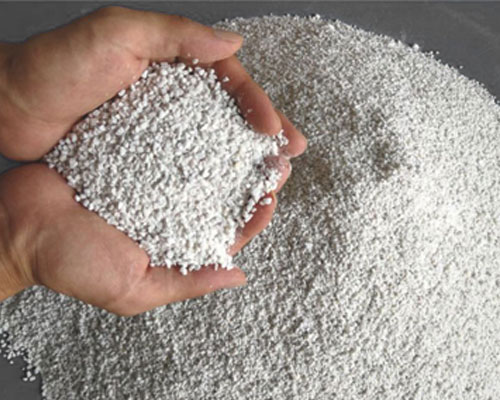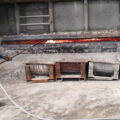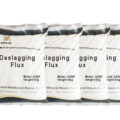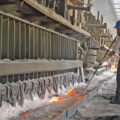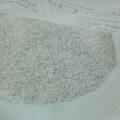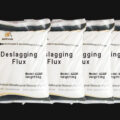When selecting the composition of the refining agent for aluminum foundry, in addition to considering the general physical properties of the refining agent (such as melting point, viscosity, surface tension, density, volatility, etc.), the characteristics of the chemical interaction between the refining agent and the metal and gas medium must also be considered. Try to make it have a strong ability to adsorb and dissolve inclusions, a low melting point and good separation of slag and aluminum, and to make certain components of the refining agent change the properties of the furnace gas when heated and melted, forming a certain reducing atmosphere, weaken the oxidation of aluminum.
When the refining agent for aluminum foundry mainly plays a protective role, the chloride should be selected. When degassing purification is the main task, a refining agent that effectively reacts to aluminum to produce gaseous substances should be selected. When the main purpose is to exclude inclusions, the thermodynamic and kinetic conditions of the refining agent should be fully considered. At the same time, the economy, preservation, safety, source of resources and environmental protection of the refining agent must also be considered.
Commonly used chloride salts in production are: zinc chloride, manganese chloride, potassium chloride, sodium chloride, hexachloroethane, carbon tetrachloride, which can be used alone or in combination. Fluoride (NaF, AlF3, CaF2, MgF2) as an additive can significantly improve the kinetic conditions of removal and purification. If the refining agent is required not only to purify, but also to modify or refine the grains, a composite refining agent composed of added modification or refiner can be used to achieve the purpose of comprehensive treatment of molten aluminum.
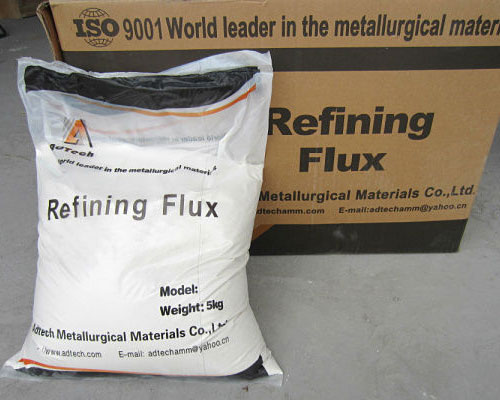
With the increasing awareness of environmental protection, pollution-free refining agents are increasingly required. Hexachloroethane and Freon, which are commonly used in production, have good refining effects, but their environmental pollution cannot be ignored. In addition, hexachloroethane and freon are used as refining agents, and there are strict requirements on the feeding order. Generally, Mg, Sn, Zn, Be and other elements can be input after refining. This will complicate the smelting process, and at the same time, the feeding of materials after refining will provide opportunities for the alloy to get gas and carry inclusions. Therefore, refining methods that combine N2 and Ar gas refining processes with other technologies have once again received attention and are widely used today.
N2, Ar and molten aluminum do not react chemically, and they mainly rely on the diffusion mechanism, that is, physical degassing, without causing pollution. However, the refining process is relatively slow. For this reason, high-speed rotating N2 and Ar injection refining devices and equipment have been developed to make up for their shortcomings and greatly improve the refining effect. At present, using N2 and Ar gas as the carrier, adding a small amount of pollution-free refining agent, using a single tube, porous or rotary injection device and equipment to purify aluminum liquid, is an advanced refining technology, which has been widely used in industrialized countries use.


